552,393 total views, 6 views today
Select the document
Enter your Name and Email
Click “Send Download Link”
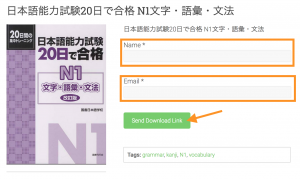
Google drive link of the document will be send to your email immediately.
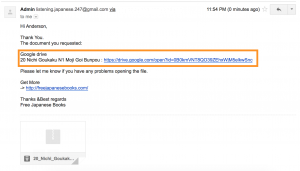
All files in .zip format. You just need to simply unzip.
Enjoy 😀

552,393 total views, 6 views today
Select the document
Enter your Name and Email
Click “Send Download Link”

Google drive link of the document will be send to your email immediately.

All files in .zip format. You just need to simply unzip.
Enjoy 😀
71,804 total views, no views today
Japan is famous for its anime or manga series which has influenced more and more countries, not only in Asia. Manga and Anime have become a big part of the Japanese modern culture. That is the reason why there are many Anime series in top 10 list of Japanese series
Views: 23,5 millions.
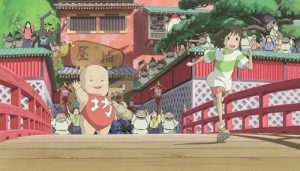
Sen to Chihiro no Kamikakushi (Spirited away) is an anime series released in 2001, produced by Studio Ghibli.
The series is about a 10-year-old girl, stuck in a spirit world after her parents were transformed into pigs on the way to their new house. The little girl then had to work in a public bath room of Yubaba to find a way to rescue her parents and come back to the human world.
Views: 14,2 million.
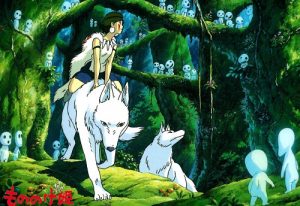
も ののけ姫 (もののけひめ Mononoke Hime: Princess of evil spirits) is one of the most epic anime series by Miyazaki, produced by Ghibli in 1997. “Mononoke” is Japanese word which means an evil spirit that causes disease, harms human beings… in another words, they are “vengeful spirits”.
Being cursed after killing Demon Tarari, prince Ashitaka has left the village to find out reasons why the Demon appeared and find ways to break the curse.
He headed west and met Lady Eboshi, who always wanted to seize the entire forest in the west. He also confronted Princess Mononoke – adopted by the white wolf goddess Moro. He then got dragged into the fight between the two women, also the fight between the forest goddesses and human kind.
With honesty and kindness, he had appeased the hatred towards the human kind in Mononoke Hime and showed Eboshi that the forest and human kind can live in harmony.
Views: 13 millions.
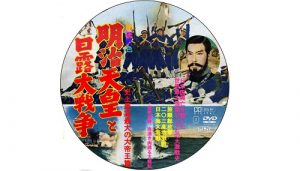
明治天皇と日露大戦争 Emperor Meiji and the Great Russo-Japanese War. The film was produced by director Watanabe Kunio. The series is about the Japan’s battle against Russia’s aggressive invasion.
Views: 12,87 millions.
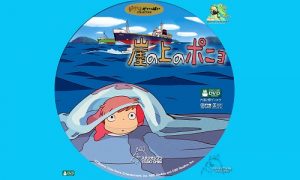
崖の上のポニョ(が けのうえのポニョ, Ponyo on the Cliff by the Sea)
Mermaid Ponyo is the daughter of a masterful wizard and a sea goddess, had escaped from home and rescued by the boy Sousuke after getting stuck in a bottle.
Her father knew about that and grounded her. Ponyo escaped again to meet Sousuke with the help of her siblings, she then transformed into a human being.
Views: 12,60 millions.
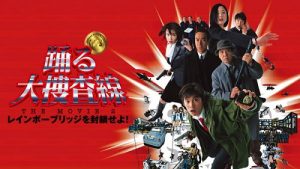
レインボーブリッジを封鎖せよ (Save the Rainbow bridge) is one of the most popular detective movies in the series: 踊る大捜査線.
Views: 9,61 millions.

Godzilla is a half gorilla half whale monster awaken by nuclear radiation after a long sleep in an underwater city. It then attacked Tokyo – the capital of Japan.
Views: 8,8 millions.

Like a movie about doomsday, 日本沈没 is a story about the vanishing of islands after an earthquake.
Views: 8,34 millions.

This is a story about two pilots Shoichi Tsukioka and Koji Kobayashi. On the hunt for schools of fish, they saw two monsters fighting, one of them is a giant Gorilla. The two monster then fell off the cliff and into the ocean, next to Osaka.
The pilots reported to the authorities in Osaka and another battle against Godzilla had begun.
Views: 8 millions.
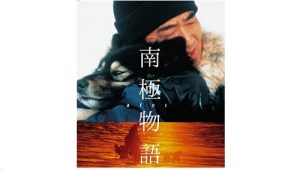
This is a story about the survival of the 15 dogs chained and left in South Pole, until their owners came back.
Views: 7,5 millions.
借 りぐらしのアリエッティ (Arrietty the borrower) is an anime series released in 2010, directed by Yonebayashi Hiromasa. The series revolves around a girl named Arrietty, a midget living under the floor. Her best friend is Sho, a boy who had congenital cardiovascular conditions and lived with with his aunt.
The movie was released on July, 17th 2010 and became the highest grossing movie in Japan in 2010. The movie had worldwide box office gross of 145 millions dollar and won the 34th Japan Academy Prize for Animation of The Year.
Above are the top 10 list of Japanese series, shown in Japan and all over the world.
960,350 total views, 10 views today
A great way to study Japanese is by watching, listening to or reading ニュース(にゅーす), the news.
The news helps you learn important vocabulary and improve your listening and comprehension. Another advantage is that you can know what the heck is going on. All of the studying I did with the news came in really handy during the nuclear meltdown in Fukushima a few years ago. I was very glad I’d done it.
But I have to say that it’s tough at the start. When I first moved to Japan ten years ago, I planted myself in front of the news nearly every night and couldn’t make heads or tails of what anybody was saying. But I stayed the course and I kept studying, along with practicing conversation whenever possible.
Here are some tips that made it easier for me (and will for you too).
Consume a lot of news on a regular basis. Of course, the more you practice, the better your comprehension will become. But with news, there are certain phrases and words that are used repeatedly, such as:
について – about, concerning
によって – according to, due to
。。。に注意してください (。。。にちゅういしてください) – please beware of…/be careful with…
詐欺に注意してください。(さぎにちゅういしてください。) – Please beware of fraud.
雷雨に注意してください。(らいうにちゅういしてください。) – Please be careful with the thunderstorm.
政府 (せいふ) – government
問題 (もんだい) – problem, issue, question
事件 (じけん) – affair, case
地震 (じしん) – earthquake
You’ll get used to hearing these words and phrases, and this will boost your comprehension.
When you first start studying with the news, don’t try to understand everything that’s being said. That will drive you insane. Instead, take in whatever you can pick out and try to get the gist of what they’re saying. If you find yourself losing the thread of what’s being said, try to start up again with the next story.
Whenever you’re able to pick out a new word or phrase, write it down. This will help you remember it the next time you hear it. Before you start your news watching sessions, do a little drilling on your new vocabulary to help it stick so that you’ll be better able to follow your stories.
Most of us watch the news on TV, but if you’re studying a language with the news, another option is to listen to the radio or a news podcast. In an audio format, broadcasters tend to talk more slowly and clearly. I noticed this when I discovered the talk radio stations in Tokyo. With podcasts, you can save episodes to go back and listen to them again.
If you’re not particularly interested in the news, choose a specific field of the news that interests you. If you’re a baseball fan, watch the sports news. If you like cars, find an automotive news podcast. If you’re into music, find some news about the Japanese music scene.
Find a particular story that interests you and follow it. Each day, tune in to news about your story. You’ll remember the vocabulary and have the necessary context to understand the latest broadcast. I remember doing this with a newspaper story about a high school girl murder case. Pretty morbid subject matter, I know, but it was easier to understand than the political bickering and other news.
A cool exercise for learning Japanese with news is to find the same story in both English and Japanese. Watch or read the story in Japanese first, and then use the English story to see if you understood it. This is easiest to do with newspaper articles. Often, a news story will originate with a native English news service and be translated into Japanese. With the internet, it’s relatively easy to find both stories.
Keep in mind that when you learn Japanese with news, you’re not learning everyday conversation. I point this out because you don’t want to talk like a news reporter when you hang out with your friends. I recommend learning with the news as part of an overall study routine that includes colloquial Japanese as well.
All of the resources below are free and most are aimed at Japanese language learners.
44,881 total views, no views today
The Sengoku was a century-long period of political upheaval and warlordism in Japan, lasting from the Onin War of 1467–77 through the reunification of the country around 1598. It was a lawless era of civil war, in which the feudal lords of Japan fought one another in endless plays for land and power. Although the political entities that were fighting were actually just domains, the Sengoku is sometimes referred to as Japan’s “Warring States” Period.
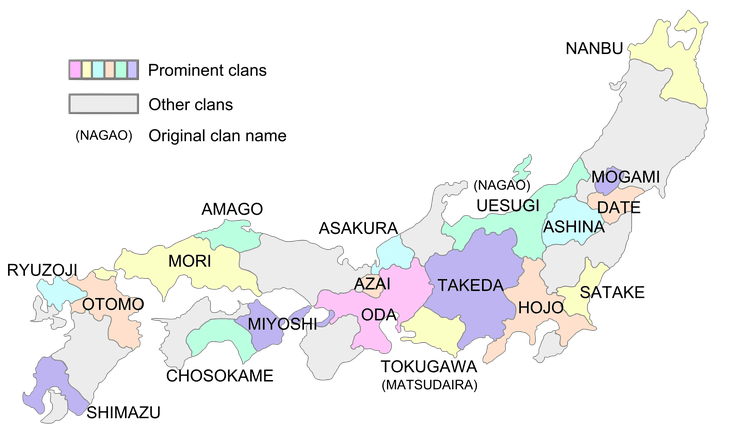
The Onin War that initiated the Sengoku was fought over a disputed succession in the Ashikaga Shogunate; in the end, nobody won. For the next century and a half, local daimyo or warlords vied for control over the different regions of Japan.
Japan’s “Three Unifiers” brought the Sengoku Era to an end. First, Oda Nobunaga (1534–1582) conquered many other warlords, beginning the process of unification through military brilliance and sheer ruthlessness. His general Toyotomi Hideyoshi (1536–598) continued the pacification after Nobunaga was killed, using a somewhat more diplomatic but equally pitiless set of tactics. Finally, yet another Oda general named Tokugawa Ieyasu (1542–1616) defeated all opposition in 1601 and established the stable Tokugawa Shogunate, which ruled until the Meiji Restoration in 1868.
Although the Sengoku Period ended with the rise of the Tokugawa, it continues to color the imaginations and the popular culture of Japan to this day. Characters and themes from the Sengoku are evident in manga and anime, keeping this era alive in the memories of modern-day Japanese people.
Thoughtco.com

Learn more about this game : link
35,003 total views, no views today
Obon is a very important festival for Japanese people. On the occasion of Obon, LearnJapanesedaily would love to share with you about Obon festival in Japan.
お盆(お ぼん)is a shortened form of 「盂蘭盆」 (うらんぼん)meaning a bowl or a tray (holding the offerings). The Obon festival originates from the story of Mokuren, who used his supernatural powers to rescue his mother.
The story is very common in China and countries which are strongly influenced by Chinese Buddism such as Japan and Vietnam. In Vietnam, the festival is a chance to show gratitude to the parents while in Japan, is to show gratitude to the ancestors.
Obon festival takes place around July, 15th of the lunar calendar, (as in some places, people follow the lunar calendar while in other places, people follow the solar calendar, hence the date difference).
The Obon festival lasts 3 days, if the holidays happen to overlap with Sunday, people will have the next Monday off to make up for this. In some places, people are given even a week off.
In this holiday, the Japanese often have these kinds of activities:
On the first day of Obon festival, the Japanese often make a bonfire inside the garden or in front of the gate, light an oil lamp on the Altar to guide their ancestors’ spirits home.
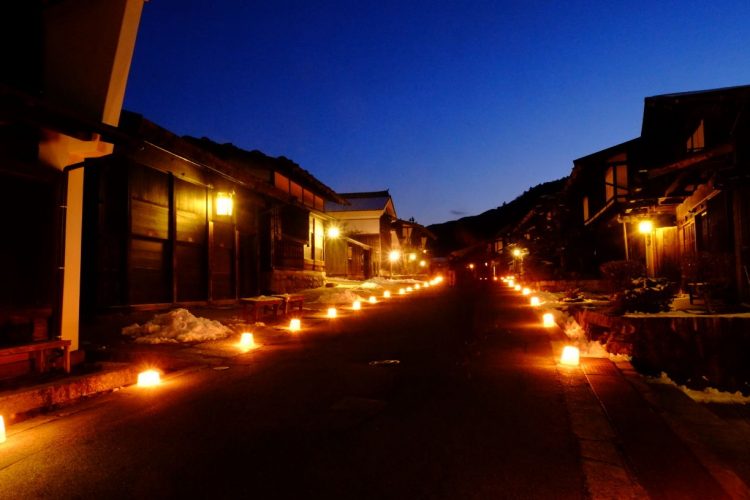
In many places, the Japanese use a cucumber or an eggplant to create a semblance of a horse which is used to carry the spirits.

During the time of Obon festival, the Japanese often place offerings on the Altar believing that their loved ones are around at the moment.

In many places, they perform Obon dance or dress up in costume parading down the streets. Obon festival is a chance for families to gather together, hence the dancing.
Some people think the Obon dance derived from the story: Mokuren danced happily with joy because of his mother’s release and grateful for his mother’s kindness. (Perhaps this is the Japanese’s version since it only exists in Japan).
To the cities which organize costumed festivals, everyone can register to take part in it. On the day of the dance, each team dress up as registered, arrive at destined places and dance along the decorated streets. Many foreigners also join this activity.

In the last day of Obon festival, they often make a bonfire (where they made the welcoming bonfire). This is to bid farewell to their deceased ancestors. In some places, people send a floating colored lantern down the river or light a firework in memory of them.
Above are everything about Obon festival in Japan, LearnJapanesedaily would like to wish you a happy holiday!
362,727 total views, 10 views today
By JLPT Level:
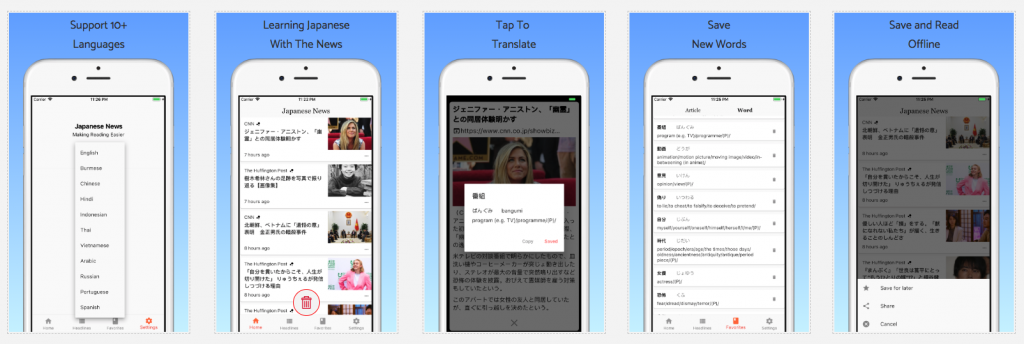
Enjoy
55,332 total views, 2 views today
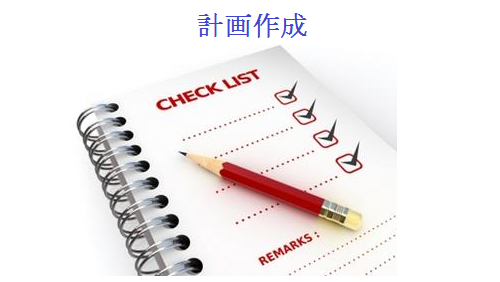
While learning goals are a target that you aim for, learning plans will show you which step and action you need to take. That way you can reach your goals steadily, quickly within your time and money budget.
Learning plans helps you manage your time and allocate your time budget strategically (especially with detailed plans), it helps you keep everything in check, to see if what you’re doing is enough for you to reach those goals? If it’s not enough, you’ll need some adjustments.
Learning plans helps you focus solely on what you’re doing, you don’t have to worry about other things because you have already allocated your time into individual tasks.
You might need an hour or two to make a Japanese plan, however, don’t hesitate to spend that much of time, what you can benefit from it will be worth it.
There are two types of Japanese learning plans:
Mid-term plans (2-4 years): You have to sketch out what you need to do in 2 to 4 years. For example, your goal is to become a Japanese interpreter in 3 years. You can plan to focus on the basis and do some research on the field that you wish to work on (think about it as the time for you to relax since you will be more excited over things that you like) in the first year. In the second year, you need to practise for both the test and your listening and speaking skills. The third year will be the time for you to practise your speaking and writing skills, along with improving your specialized Japanese vocabulary.
Short-term plans (6 months – 1 year): Based on those above mid-term plans to determine what you need to do in each year, only this time is for each quarter, month and day. It’s important to allocate your time for every day.
Making a Japanese learning plan isn’t hard, what you need is a goal, take everything in consideration (mostly time), and find out what tasks need to be done to achieve the goal in a specific period of time – how long it takes to complete each task. It goes on like that until you’re able to allocate your time for each day.
For example, if you want to have your N5 after a month learning Japanese, you need to understand things you need to know about the JPLT N5, the JPLT N5 structure, how much N5 vocabulary or N5 Kanji or N5 grammar you need to learn. Split each day’s workload (25 days for example), you will know how much vocabulary, Kanji or grammar you need to learn every day.
You also need to make time to practise listening, writing and sometimes take some sample JPLT N5 so you can learn and see your progression at the same time. From the amount of vocabulary, Kanji…you need to learn in a day, take note of how long it takes for you to learn, which time is the best for you then choose that time to learn every day. You can relax, research, prepare as well as do other things in the remaining time. That’s how you use your day to reach your goal.
While following your plan, unexpected things will probably happen (illness, family business,.), there are things you can take a rain check on (friend gathering, family business…), there are things you can’t avoid (take a rest to recover from illness). Therefore, you need to have buffer time to back up your plan. For example you can’t learn 7 days straight in a week, only learn in 6 days and spend one remaining day to revise, relax and to deal with unexpected scenarios. When you make a Japanese learning plan, or any other plan, don’t forget about this buffer time.
At the end of every day, spend some minutes to review what you have learnt in one day, how would you rank your day? 10 for an excellent day and go on. You’ll be rewarded if the outcome turns out well, and punished if the outcome turns out badly.
So you have already had your detailed plan, now it’s time to get started. Be determined to achieve your goal, because there will be many hardships along the way. It may be from other factors (friends, studying…) and from yourself (laziness, your love for sleep and all the fun…). Just win over them and over yourself and improve every day.
Making a Japanese learning plan is based on the knowledge, prediction, for a point of time in the future. Things can go like planned, or better ( for example. Your goal is to have your N5 in a month, but you can do it in only 3 weeks). You then have to adjust your plan, be flexible. However, don’t take advantage of that to compromise with your laziness and lack of determination.
60,873 total views, 4 views today

The Tokugawa Shogunate defined modern Japanese history by centralizing the power of the nation’s government and uniting its people.
Before the Tokugawa took power in 1603, Japan suffered through the lawlessness and chaos of the Sengoku (“Warring States”) period, which lasted from 1467 to 1573. Beginning in 1568, Japan’s “Three Reunifiers”—Oda Nobunaga, Toyotomi Hideyoshi, and Tokugawa Ieyasu—worked to bring the warring daimyo back under central control.
In 1603, Tokugawa Ieyasu completed the task and established the Tokugawa Shogunate, which would rule in the emperor’s name until 1868.
Tokugawa Ieyasu defeated the daimyo, who were loyal to the late Toyotomi Hideyoshi and his young son Hideyori, at the Battle of Sekigahara in October 1600. In 1603, the emperor bestowed upon Ieyasu the title of Shogun. Tokugawa Ieyasu established his capital at Edo, a small fishing village on the marshes of the Kanto plain. The village would later become the city known as Tokyo.
Ieyasu formally ruled as shogun for only two years. In order to ensure his family’s claim on the title and to preserve the continuity of policy, he had his son Hidetada named shogun in 1605, running the government from behind the scenes until his death in 1616. This political and administrative savvy would characterize the first Tokugawa shoguns.
Life in Japan was peaceful under the control of the Tokugawa government. After a century of chaotic warfare, it was a much-needed respite. For the samurai warriors, peace meant that they were forced to work as bureaucrats in the Tokugawa administration. Meanwhile, the Sword Hunt ensured that nobody but the samurai had weapons.
The samurai were not the only group in Japan forced to change lifestyles under the Tokugawa family. All sectors of society were confined to their traditional roles much more strictly than in the past. The Tokugawa imposed a four-tier class structure that included strict rules about small details—such as which classes could use luxurious silks for their clothing.
Japanese Christians, who had been converted by Portuguese traders and missionaries, were banned from practicing their religion in 1614 by Tokugawa Hidetada. To enforce this law, the shogunate required all citizens to register with their local Buddhist temple, and any who refused to do so were considered disloyal to the bakufu.
The Shimabara Rebellion, made up mostly of Christian peasants, flared up in 1637, but was stamped out by the shogunate. Afterward, Japanese Christians were exiled, executed, or driven underground, and Christianity faded from the country.
Although they employed some heavy-handed tactics, the Tokugawa shoguns presided over a long period of peace and relative prosperity in Japan. In fact, life was so peaceful and unchanging that it eventually gave rise to the ukiyo—or “Floating World”—a leisurely lifestyle enjoyed by urban samurai, wealthy merchants, and geishas.
The Floating World crashed down to Earth suddenly in 1853, when the American Commodore Matthew Perry and his black ships appeared in Edo Bay. Tokugawa Ieyoshi, the 60-year-old shogun, died soon after Perry’s fleet arrived.
His son, Tokugawa Iesada, agreed under duress to sign the Convention of Kanagawa the following year. Under the terms of the convention, American ships were given access to three Japanese ports where they could take on provisions, and shipwrecked American sailors were to be treated well.
This sudden imposition of foreign power signaled the beginning of the end for the Tokugawa.
The sudden influx of foreign people, ideas, and money severely disrupted Japan’s lifestyle and economy in the 1850s and 1860s. As a result, Emperor Komei came out from behind the “jeweled curtain” to issue an “Order to Expel Barbarians” in 1864. However, it was too late for Japan to retreat once more into isolation.
Anti-western daimyo, particularly in the southern provinces of Choshu and Satsuma, blamed the Tokugawa shogunate for failing to defend Japan against the foreign “barbarians.” Ironically, both the Choshu rebels and the Tokugawa troops began programs of rapid modernization, adopting many western military technologies. The southern daimyo was more successful in their modernization than the shogunate was.
In 1866, Shogun Tokugawa Iemochi suddenly died, and Tokugawa Yoshinobu reluctantly took power. He would be the fifteenth and last Tokugawa shogun. In 1867, the emperor also died, and his son Mitsuhito became the Meiji Emperor.
Faced with a growing threat from the Choshu and Satsuma, Yoshinobu relinquished some of his powers. On November 9, 1867, he resigned from the office of the shogun, which was abolished, and the power of the shogunate was handed over to a new emperor.
The southern daimyo launched the Boshin War to ensure that power would rest with the emperor rather than with a military leader. In 1868, the pro-imperial daimyo announced the Meiji Restoration, under which the young Emperor Meiji would rule in his own name.
After 250 years of peace and relative isolation under the Tokugawa shoguns, Japan launched itself into the modern world. Hoping to escape the same fate as once-powerful China, the island nation threw itself into developing its economy and military might. By 1945, Japan had established a new empire across much of Asia.

Learn more about this game : link
58,437 total views, no views today

The uniqueness of Japanese Folktales. So you are studying Japanese culture. This article will give you an insight into the realm of fantasy in Japanese culture: the Uniqueness of Japanese Folktales. What is distinctive about Japanese folktales? What have the adults taught their children over generations? What ideology and philosophy do the Japanese want to convey to each other and to the whole world, through their fairy tales?
In a typical Japanese folktale, there will be a kind-hearted protagonist faced with adversities (which may include antagonists), and a mystic force to help the protagonist. In the end good people have good results. OK, you may detect the very motif of any other folktales all over the world. However, unlike other countries’ folk stories, where amazing magic solves all the problems, Japanese tales do not focus on the mystic force. Even with the help from god, the protagonist plays the main part in the development of the story; that is, without the will and effort of the protagonist, no problem is solved despite the presence of magic.
The example below will clarify the uniqueness of Japanese folktales.
Japanese Folktale: God of Poverty
In Osaka lives the impoverished Gohei. He fails in most business because of his timidity and reticence. When Kami (God) of the Poor visits him, Gohei could not offer the kami anything, despite his good will. The god understands Gohei’s sincerity, and tells him: “At midnight three knights – one in yellow outfit and on yellow horse, one white, the last black – will travel along the pagoda. When the first knight passes by, hold the rein of his horse. If you fail, try at the second and third knight.”
Gohei thanks the god. He waits near the pagoda. At midnight, the three knights approach, appearing fearsome. Gohei is petrified, until the yellow knight has passed by. Regaining consciousness, Gohei seizes the rein of the white horse, but it roars and gallops. Gohei tries with the last knight, and the rein slips from his shaking hand. Despaired, he spots one more horseman approaching. He seizes the horse’s rein, and the horse stops. The horseman is but the Kami of the Poor, who explains:
“You are too shy to grab one of the three Gods of Wealth: the yellow one is Kami of Gold, the white Silver and the black Bronze. You are just so cowardly you can only grab me, God of Poverty. Try again tomorrow’s night, as we four will pass the pagoda again.”
The following night Gohei waits until the yellow knight comes. Gohei willingly grips the yellow horse’s rein. It gallops away ferociously. Undaunted, Gohei grabs the white horse. It shakes him off. Summoning all his courage, Gohei snatches the last horse. It swags and almost kicks him down, but Gohei closes his eyes and wrenches his arms. The horse wears out and stops struggling. When Gohei opens his eyes, the black knight and horse has disappeared, and in his hands is a bag filled with bronze coins. Then Kami of the Poor ambles by, giving Gohei a farewell smile.
Gohei comes home, fixes his house, gets married and lives happily.
(based on Contes Japonais (Japanese folktales) – Gertrude Fritsch, Gründ – Paris, 1970)
As seen, God of the Poor does not directly solve Gohei’s prolonged adversity, but offers him opportunities, as symbolized by the imaginary Gods of Wealth. Even with such chance, if Gohei does not overcome his innate cowardice, he may remain poor for the rest of his life. The “bronze award” fits Gohei’s ability, and he deserves the happy ending not merely because he is kind, but mainly because he has struggled to win over his limitation.
Now you may have got an idea about the uniqueness of Japanese folktales. The moral of most Japanese fairy tales is not “God bless the kind”, but “The brave deserves”. A Kima (God) may give you some opportunities. If you fail to make the most of one, look for another and hold on. But if you are timid and hesitant, the opportunities just pass by. Japanese folktales often use great metaphors and allegories and convey Japanese philosophies and principles. They teach their children, and even adults, great lessons about will and courage.
We all know “Cinderella”, the most popular folktale in Europe, whose variant versions spread over continents. Poor and persecuted, Cinderella gets helped by the fairy-godmother, who makes carriage out of pumpkin and scintillating glass slippers out of nowhere. Cinderella goes to the ball, leaves there one slipper, then waits for the prince to come take her as spouse. Without the magic of godmother, Cinderella would still be doing chores. Cinderella deserves “happiness ever after” only because of her graciousness and benevolence. However, you may hardly find such an easy grant from the heaven in a typical Japanese folktale.
No wonder most Japanese are either tenacious strugglers or deep thinkers, or both. They act, fail, persist, win, and reflect on the process, crystallizing their unique philosophies. As you study Japanese culture, reading Japanese folk stories will bring not only relaxation but also deep lessons that may change your life. Indeed, the principles and morals Japanese have all absorbed as children did make Japanese one of the greatest peoples in the world.
52,394 total views, no views today

7 gestures to avoid in interviews. When being invited to an interview in with a Japanese company and other companies in general, some of your gestures can leave your a bad impression on your recruiters. Those kind of gestures exist inside each of us. They might be a subconscious habit, sometimes hard to control.
You might also be interested in: Japanese questions frequently asked in interviews with a Japanese company
Eye contact during conversation is very principle. If you look away while talking instead of looking at your recruiters in the eye, you are going to leave them a bad impression. Making eye contact when you first meet someone can be uncomfortable, however, to not leave a bad impression, learn to look at the other person in the eye during conversation (it would be better if you try directing your gaze towards the nose bridge, between the eyes).
You might also be interested in: Eye contact in interviews
Fidgeting in your seat will be noticed easily by your recruiters. Things like stretching, studying with your nails, cracking your knuckles… often leave a bad impression on them. Interviews can be stressing, especially the long ones. You might get tensed, uncomfortable, however don’t make it too obvious.
Standing superiorly with legs spread widely is interpreted as a sign of dominance, leaving an impression of a person who is too proud and likes showing off. Remember to stand with your legs slightly apart.
Leaning against the chair suggests boredom lack of interest in the job . With that posture, no matter what you say, the outcome can’t be as ambitious as it should be. Thus, sit up straight!
During conversation, many have the propensity to lean forward or slouch (like when you check yourself out in a mirror). Leaning in indicates that you’re interested, but if you lean forward a bit too much, it can come off as being overly solicitous or even threatening. Thus, do it right, sit up straight!
Swaying and shaking your legs indicate lack of concentration, overly confidence or nervousness. This is a bad habit, can leave a bad impression on the recruiters. If you have the habit of doing this, get rid of it before going to the interview.
This, usually can be seen in women, especially those who have long hair. Tucking your hair behind your ear or twirling your hair may seem normal, but to many recruiters, these gestures can leave a bad impression. Wear your hair up so you don’t have to bother with that.
Above are 7 gestures to avoid in interviews. If you have one of those things, fix it or at least control it in your interview.